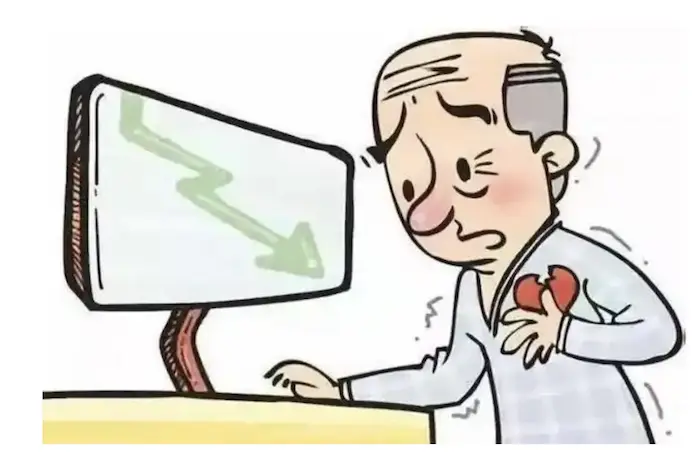Reflex bradycardia is a type of bradycardia induced by autonomic nervous system reflexes, primarily mediated by the parasympathetic system. It is a clinically relevant response often triggered by physiological or pathological stimuli such as pressure on specific areas of the body, sudden changes in posture, or certain medical procedures. Although it can be benign, reflex bradycardia may present in contexts requiring immediate attention, such as during surgery, trauma, or neurological conditions. Understanding its causes and mechanisms is vital for appropriate diagnosis and intervention.
What Is Reflex Bradycardia?
Reflex bradycardia is a reduction in heart rate due to a reflex mechanism. This reflex is typically initiated by afferent sensory input to the brainstem, which activates parasympathetic (vagal) efferent pathways. These vagal impulses slow the sinoatrial (SA) node, reducing heart rate.
Physiological Basis of Reflex Bradycardia
The autonomic nervous system regulates heart rate through the balance of sympathetic and parasympathetic tones. Reflex bradycardia occurs when parasympathetic activation outweighs sympathetic stimulation. The vagus nerve, a key component of this system, plays a central role. When activated, it releases acetylcholine, which binds to muscarinic receptors in the heart, slowing pacemaker activity.
Key Reflex Pathways Involved
Baroreceptor Reflex
Baroreceptors located in the carotid sinus and aortic arch detect changes in arterial pressure. When blood pressure rises, these receptors send afferent signals to the nucleus tractus solitarius (NTS) in the brainstem. The NTS activates parasympathetic outflow and inhibits sympathetic tone, lowering heart rate and blood pressure. This is a homeostatic mechanism to stabilize hemodynamics.
Oculocardiac Reflex
Stimulation of the ocular muscles, especially during eye surgery or trauma, can elicit the oculocardiac reflex. Afferent signals from the trigeminal nerve reach the brainstem, where they activate vagal efferents. This results in a sudden drop in heart rate, and in severe cases, can cause asystole.
Trigeminal-Cardiac Reflex
This reflex is triggered by stimulation of the sensory branches of the trigeminal nerve during facial or cranial surgery. Like the oculocardiac reflex, it results in heightened vagal activity, bradycardia, and hypotension.
Valsalva Maneuver
Forceful expiration against a closed glottis increases intrathoracic pressure. Initially, venous return decreases, lowering cardiac output. As the baroreceptor reflex compensates, bradycardia may occur during the release phase due to a sudden surge in blood pressure.
Cushing Reflex
Increased intracranial pressure can activate the Cushing reflex—a triad of hypertension, bradycardia, and irregular respiration. It is a critical sign of increased intracranial pressure and impending brain herniation.
What Causes Reflex Bradycardia?
Medical and Surgical Procedures
Several procedures can stimulate reflex bradycardia:
- Ocular surgeries (e.g., strabismus correction)
- Neurosurgical operations (e.g., during craniotomy)
- Laparoscopic surgeries (peritoneal distension)
- Carotid endarterectomy (manipulation of the carotid sinus)
Gastrointestinal Triggers
Stimulation of abdominal or thoracic viscera, particularly during endoscopy, intubation, or surgical manipulation, may induce vagally mediated bradycardia.
Neck Compression or Pressure
External pressure on the carotid sinus, such as from tight collars or neck massage, can activate baroreceptors and reduce heart rate.
Pharmacological Agents
Certain drugs can enhance vagal tone or mimic parasympathetic activity:
- Beta-blockers
- Calcium channel blockers
- Cholinergic agents (e.g., neostigmine)
Pain and Emotional Stimuli
Severe pain or strong emotional responses may activate reflex pathways via vagal stimulation, resulting in transient bradycardia.
Clinical Manifestations of Reflex Bradycardia
Symptoms vary based on the degree of bradycardia and underlying health status:
- Lightheadedness or dizziness
- Fatigue
- Syncope or presyncope
- Nausea
- Palpitations
- Intraoperative asystole
Diagnosis of Reflex Bradycardia
Diagnosis involves clinical assessment and correlation with triggering events.
History and Examination
A detailed history focusing on recent surgeries, trauma, or triggers is essential. Physical examination may reveal hypotension or signs of autonomic dysfunction.
Electrocardiogram (ECG)
ECG often shows sinus bradycardia or sinus pauses. Occasionally, more severe conduction blocks may appear.
Holter Monitoring
Ambulatory monitoring can identify transient bradycardia episodes and correlate them with daily activities.
Provocative Testing
Carotid sinus massage or tilt-table testing may reproduce symptoms under controlled conditions.
Differential Diagnosis
Reflex bradycardia must be distinguished from:
- Sick sinus syndrome
- Atrioventricular block
- Drug-induced bradycardia
- Hypothyroidism
- Electrolyte imbalances
Management Strategies
Immediate Intervention
If reflex bradycardia occurs during surgery or a medical procedure, immediate cessation of the trigger is crucial. Atropine may be administered to block vagal effects.
Pharmacological Management
Atropine: First-line treatment for acute bradycardia due to vagal stimulation.
Glycopyrrolate: An alternative anticholinergic with less central nervous system penetration.
Epinephrine or Isoproterenol: Used in severe or unresponsive cases.
Device Therapy
In recurrent or refractory cases, especially in patients with underlying conduction disease, a pacemaker may be required.
Preventive Measures
- Avoid known triggers when possible
- Preoperative prophylactic atropine in high-risk surgeries
- Gentle surgical techniques near the vagus nerve or carotid sinus
- Avoid excessive carotid massage in susceptible patients
Prognosis and Long-Term Outcomes
In most patients, reflex bradycardia is transient and resolves with the removal of the stimulus. However, if unrecognized, it may cause significant morbidity, including cardiac arrest. Early identification and appropriate management ensure excellent prognosis in the majority of cases.
Special Populations
Children
Children are more prone to oculocardiac reflex during eye surgeries. Vigilant monitoring and prophylactic atropine may be indicated.
Older Adults
Elderly patients often have decreased autonomic responsiveness and may experience more severe bradycardic episodes, particularly with carotid sinus hypersensitivity.
Conclusion
Reflex bradycardia represents a critical interface between the cardiovascular and nervous systems. It underscores the sensitivity of the heart to neural modulation. While often benign, in certain contexts it may signal an emergent condition or complicate medical procedures. A thorough understanding of its mechanisms, triggers, and clinical management enables effective prevention and intervention, ultimately improving patient safety and outcomes.
Related topics:


